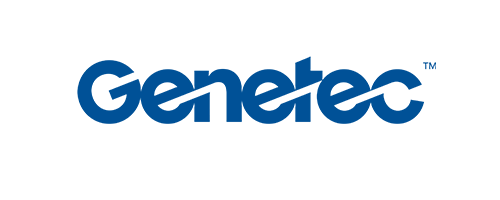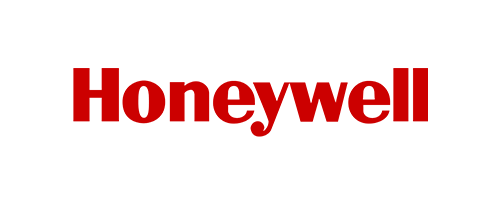- Products
- Use Cases
- Process contractors and validate credentials
- Improve facility compliance to industry standards
- Improve speed of visitor check-in process
- Screen visitors or restrict access to my facility
- Automate my reception experience
- Improve and automate my facility evacuation process
- Manage facility security across multiple locations
- Industries
- Pricing
- Resources
- Company
To manage the modern workforce, enterprise organizations need solutions that can flex their muscles in the face of an increasingly flexible workplace. Future-focused, adaptive workforce management software and strategies are helping to keep complex enterprises productive and profitable.
This guide explores workforce management, solutions, software, and the future enhancement of employee management systems.
| Contents |
| Workforce Management Definition |
| Why It's Needed |
| 7 Must-Have Features |
| Future of Employee Management Systems |
| Workforce Management Solution |
What is Workforce Management
Workforce management refers to the systems and strategies employed by organizations and facility managers to maximize employee productivity, reduce risk, and ease compliance with policies and regulations.
The goals of workforce management can be accomplished by:
- The strategic allocation of people and resources
- Asset & employee tracking
- Enforcing and updating compliance regulations
- Automating employee workflows and scheduling
The most effective workforce management software systems offer a comprehensive solution to monitor and manage employees on one centralized platform.
Why is Workforce Management Important
An efficient workforce means increased productivity, decreased labor costs, and greater profitability. Streamlining efficiency, especially in large and complex organizations, starts with comprehensive workforce management tools. Workforce management solutions help resolve some of the biggest challenges organizations face today and move toward the future.
Changing Workforce
Over the past decade, the workplace has become increasingly flexible. Successful businesses have become more adaptive and responsive to the changing workforce. Flexible scheduling and attendance policies – spurred on by the COVID pandemic – have become a fixture of the modern workforce.
Reliance on contingent workforces, temporary employees, and contractors is also increasing. Altogether, a more flexible and adaptive management strategy is necessary. A workforce management system uses automation, progressive organization, and communication tools to allow businesses to thrive throughout flux.
Employee Efficiency
In our software and our hardware, iLobby is a people-first organization. For every company, people are the biggest and most valuable assets. Workforce management tools help to make employees more productive, better trained, safer, and happier. Altogether, that's a recipe for lower costs, more profit, and lower turnover.
With voluntary turnover rates in the USA projected to increase by 20% from pre-pandemic numbers in 2022, preventing turnovers is particularly important. With replacing employees costing up to 200% of their annual salary and estimated annual costs of $1 trillion in the US alone, lowering turnover saves serious money as well as maintaining productivity.
Planning
Automating and digitizing workforce planning increases accuracy, responsiveness, and organization. Workforce management tools help assign the right people and assets to the right tasks. As part of a facility management platform, the software aligns, streamlines goals, and optimizes the people and departments involved in important projects across all locations.
Facility managers can proactively forecast workloads, scheduling and allocating employees effectively. They can easily coordinate efforts between various departments, sections, floors, and geographies all from one central platform.
Reporting features are another important benefit of workforce management software. From an online dashboard, admins instantly generate reports and review past data. Actionable insights and data make it quicker and easier than ever to identify what has worked in the past, discover opportunities for improvement, and conduct investigations.
7 Must-Have Features of Workforce Management Software
1. Access Control
Automate access control to safeguard sensitive locations, enforce capacity, ease compliance, and protect employees working after hours.
Connecting access control with visitor management systems enhances physical security in your facility. Physical barriers like turnstiles, doors, and security gates can use workforce management and employee sign-in software to control and restrict access instantly.
Enhance Access Control with Temporary Card Issuance
Control which and how many people can enter controlled areas with access control cards. Cards can be issued at reception or automatically dispensed through a visitor sign-in kiosk.
Preconfigured cards are activated and distributed upon completion of sign-in and any custom requirements. Using the card, employees can enter access-controlled areas. The card is deactivated when they leave or after a set time. The card can be returned to the iLobby kiosk, where it can be reactivated and used again by future users. Temporary access control cards are a simple and secure way to provide access to controlled areas.

Employee Record Matching
Anywhere that uses access cards has run into the problem of employees forgetting them at home or losing them altogether. It's a real headache. Lost cards are embarrassing; they interrupt workflow, slow down entrances, and pose a serious security risk. ILobby's workforce operating system relieves that headache.
iLobby can validate employees using established criteria, allowing the sign-in kiosk to issue them a temporary access card. Linking this with the employee profile, the access control system can temporarily disable the forgotten card. As a result, no one can enter using a stolen or found access card.
Managing Physical Security in the Workplace Automated access control software is a core component of workplace security best practices. Workforce management tools can automatically run checks against internal and third-party watchlists to screen entrants and restrict access to facilities.
Automating employee screening enhances safety and security for employees, workplaces, and organizations. The software instantly identifies known bad actors and threats restricting access, tagging the entry attempt, or notifying security.
Screening software also helps to meet compliance requirements. For instance, facilities in the defense industry must screen against ITAR deny lists. Following these protocols prevents fines, penalties, and prohibitions.
Validating credentials can also be accomplished through a workforce management solution. ID and passport scanning features offer rapid ID verification. This increases the accuracy of the information collected using government-issued ID. Known credentials can be quickly verified for access control and SSO (single sign-on), while maintaining logs for an audit trail.
Versatile Access Control Integrations
iLobby's workforce management software integrates directly with the FacilityOS™ platform and other existing customer control systems. Here's a quick look at how WorkforceOS™ integrates work with the most popular access control solutions. Connecting integrations to the iLobby self-guided visitor management kiosks secures and streamlines entrances.
Compatible software integrations make it easy for worksites to automate and improve exiting access control features. Versatile AC integration options make iLobby a popular solution for workforce management in the oil and gas industry, for example.

iLobby AC
Option 1: QR Code Reader
Employees sign in using a personal QR code. Once the kiosk scans the code, the employee is signed in, unlocking the door or gate. This allows entry using smartphones and is a skillful use of the visitor pre-registration feature to speed up guest induction.
Option 2: iPad Sign-In
The iPad visitor kiosk unlocks the door automatically after sign-in. No QR code is required, allowing entry without using a smartphone or pre-registration. Administrators can also pre-determine access rights based on visitor types and requirements.
![]()
C-CURE Suite
Option 1: Existing Employee Access Cards
Integrating with popular access systems, your workforce management software uses the existing employee access cards. Cards activate after signing in through the iLobby kiosk and deactivate upon sign-out.
Option 2: Blank Access Card
After a successful sign-in, the iLobby kiosk creates credentials and assigns a blank access card. The employee or visitor uses this physical card for entries and exits. After signing out, the card is deactivated and returned.
Option 3: No Card
Once the employee signs in, the door, gate, or turnstile unlocks.

GENETEC
Existing Employee Access Cards
Integrating with popular access systems, your workforce management software uses Genetec's existing employee access cards. Cards activate after signing in through the iLobby kiosk and deactivate upon sign-out.

Honeywell (Pro-Watch)
Option 1: Existing Employee Access Cards
Integrating with popular access systems, your workforce management software uses Honeywell's existing employee access cards. Cards activate after signing in through the iLobby kiosk and deactivate upon sign-out.
Option 2: Forgotten or Lost Card
Employees who forget or lose their main access card can perform an iLobby sign-in to request a temporary card.
2. Capacity Management
Automate capacity tracking and management within your facilities. Capacity planning follows the same three pillars as Scrooge's ghosts – past, present, and future. And your workforce management software needs to be able to handle all three.
- Present. Real-time workforce monitoring and tracking are important for handling day-to-day capacity, efficiency, and safety. Your facility management platform must know how many people are in your building or specific sections at a given time.
- Past. Reporting is a necessity for meeting compliance and auditing requirements. Manually generating reports, sorting through paperwork, badges, and logbooks is a slow, inaccurate process. This can make audits expensive – the average per-audit fee for private companies is $139K. Automated reporting increases audit speed and accuracy, decreasing how long companies spend on audits for lower audit fees. As well, user-friendly reporting makes it easy to review pain points and opportunities. Using past data is a great way to improve future results.
- Future. Forecasting capacity is essential for creating and scheduling effective, streamlined projects.
Essential capabilities of workplace capacity management software include:
Real-Time Capacity Tracking
Capacity tracking tools keep tabs on how many people are in a given building or sector. This allows real-time control on meeting capacity limits.
An automated workforce management solution manages limits on its own. This reduces wait times and doesn't take time away from receptionists or security officers.
Leveraging software to track capacity enforces capacity limits, preventing individuals from entering spaces where maximums have already been met. The system keeps a live view of how many individuals are in a sector. If an employee attempts to sign in to an at-capacity space, they receive a notification informing them that it is already at the limit.
A simple example of this is meeting room booking. An employee attempts to schedule a meeting in a room someone else has already booked. The workforce system immediately notifies them that the room is already booked, and they are prompted to book another room or schedule a different time.
Compliance and Policy Implementation
Meet capacity-related compliance requirements with ease. Capacity management software eases compliance with local regulations like fire and occupancy codes. In multi-location enterprises, the system can update as policies change or to meet region-specific requirements. All while still functioning under one central platform.
In addition to government and industry-related compliance, the configurability of tools like WorkforceOS™ allows organizations to define, implement and enforce their own policies. For example, including health screening or questionnaires as part of the sign-in flow.

Space Planning
Individual segments of your facility may have their own capacity limits. Segmenting your environment according to needs and policies eases space planning. Workforce tracking tools can monitor capacity in specific segments by building, floor, or zone.
Individual Access Requests
In some instances, it may be necessary to override automated capacity limits. When capacity is reached, individuals may be restricted from entering that space. If the employee has reason to work outside of regular limitations, they can request access on an individual basis.
Allowing individual access requests makes work environments flexible, decomplicating responses to changing priorities.
3. Streamlining Employee Workflow
Create a more efficient sign-in process for employees. Employees sign in by scanning cards, badges, or QR codes for rapid entry using existing employee profiles. This allows for accurate employee tracking and streamlines entries. In enterprises with large volumes of employees, this can save hours of lost time and significantly reduce lobby traffic.
Custom requirements like health questionnaires can be automatically prompted, ensuring a safe and healthy workforce. Admins can add new training or safety requirements into the workforce management system. This can prompt an employee to watch a video or complete a quiz to verify training to complete their sign-in. These prompts can be scheduled for employees at different times or dates to avoid congestion.
4. Centralized Scheduling & Reporting
Manage multiple sites and entrances in one centralized dashboard. Flexible rules can apply to specific locations while still controlling your workforce management software on one user-friendly dashboard. Generate reports, review live data with overall views, or take an in-depth look at a specific location.
Manage and schedule visits and resources from a single database. This keeps communication open, timelines transparent, and scheduling organized and accessible.
5. Data Security
Effective workforce tracking and management requires the collection of sensitive data. Protecting personally identifiable information and adhering to data retention policies is a must. This safeguards your organization, facility, and employees while easing compliance. GDPR compliance in visitor management systems is particularly important. Failure to protect personal data can lead to stiff penalties, and compliance is heavily enforced.
iLobby uses enterprise-grade data security principles to meet these requirements. Powerful infrastructure and encryption allow organizations to handle private and sensitive workforce data securely.
6. Incident Management
When incidents occur, workforce tracking tools ease emergency response. Rapid, accurate response is important for all worksites. In workforce management software for mining and other hazards-rich environments, it is all the more essential.
Real-time tracking of who is in your building makes automating headcounts simple, working in sync with tools like EmergencyOS™. Keep your facility responsive to incidents with our emergency management guide:
7. Integrations
An important feature of any enterprise software is the ability to play well with others. The iLobby workforce management solution is designed to build on your tech stack, not dismantle it. WorkforceOS™ integrates the most common and trusted business tools.
iLobby integrations are configurable and ready to work with popular tools for:
- Access Controls
- Communications
- CRM
- Drives
- Email & Calendar
- Notifications
The Future of Workforce Management Tools
The future enhancement of employee management systems is managing all aspects of facility management under a single platform. Instead of using a dozen different tools and processes, enterprises are clamoring for a centralized platform to manage everything under one roof. Reducing the number of people and tools your organization requires means lower costs, greater efficiency, improved communication, and more fluidity between tasks.
This is the vision behind FacilityOS™, an all-in-one facility management platform. Streamline the management of personnel and facility data in one place with proven hardware and software. Designed to scale along with organization, the robust facility management solution allows businesses to easily add on additional modules as businesses grow and their needs expand.
The list of modules is continually expanding to meet existing and anticipated customer needs, including:
- SecurityOS™ - Physical identity and access management software
- VisitorOS™ - Visitor management software
- DeliveryOS™ - Package tracking and management software
- EmergencyOS™ - Emergency, mustering, and evacuation tracking solution
Your Workforce Management Solution
The iLobby workforce management software provides the white glove service that your enterprise, and its visitors, deserve. A turnkey solution, your device is shipped to you with all features, software, and customization fully installed. Simply place the facility sign-in kiosk at an entrance, turn it on, and your setup is complete. Enhanced configurability increases functionality with existing systems and policies, seamlessly adopting the software into your facility.
Book your demo today and discover the iLobby difference.

